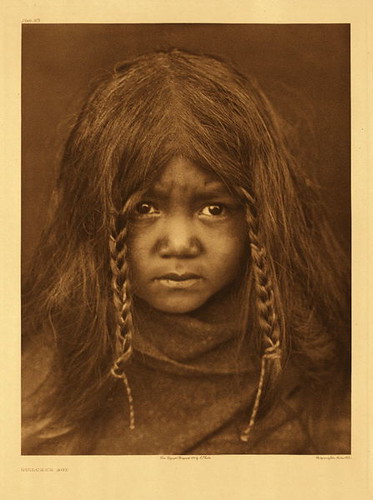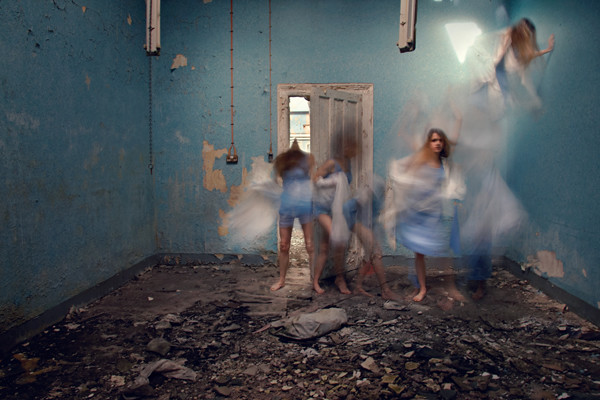I seriously don't know what week this is...
Photo II Week whatever it is :D
 I chose Bill Brandt for my first photographer this week. I Liked the distortion of the figure. This was achieved through the distance of the arm to the body and how close the lens was to the subject. Brandts work is centered around how the camera distorts the body of the figures.
I chose Bill Brandt for my first photographer this week. I Liked the distortion of the figure. This was achieved through the distance of the arm to the body and how close the lens was to the subject. Brandts work is centered around how the camera distorts the body of the figures.
 My final photographer was Brian Duffy. This photo is from a group of photographs all involving well dressed women on the street. While I didnt read any deep meaning from them I found that I really liked this one. The reflections added interest and detail while the womans gaze draws you to her as the subject.
My final photographer was Brian Duffy. This photo is from a group of photographs all involving well dressed women on the street. While I didnt read any deep meaning from them I found that I really liked this one. The reflections added interest and detail while the womans gaze draws you to her as the subject.  My second image is by the photographer Edward S. Curtis. Curtis was given the job of documenting Native American traditional life. I choose this particular portrait for the childs expression, the thing itself. What interested me is that while adult's in this situation consistently looked stoic and angry this child seems more uneasy than intruded upon. To see more of Curtis's work click here.
My second image is by the photographer Edward S. Curtis. Curtis was given the job of documenting Native American traditional life. I choose this particular portrait for the childs expression, the thing itself. What interested me is that while adult's in this situation consistently looked stoic and angry this child seems more uneasy than intruded upon. To see more of Curtis's work click here. Photo II - Week 11

Photo II - Week 9
 My first photograph is "Identical Twins" by Diane Arbus. Arbus was known for photographing the abnormal moments in people. I have always found it easy to do this with multiples. This idea has always attracted me to the idea of photographing multiple to see how easily this may or may not be and what would come of the project. What I really find successful about this photograph is its blocks of tones. The clear black, white, and grey tones are visibly blocked out into different areas of the image which creates a dynamic feeling for such a static pose. This blocking makes the other wise weak and average composition and printing successful. To see more of Arbus' work click here.
My first photograph is "Identical Twins" by Diane Arbus. Arbus was known for photographing the abnormal moments in people. I have always found it easy to do this with multiples. This idea has always attracted me to the idea of photographing multiple to see how easily this may or may not be and what would come of the project. What I really find successful about this photograph is its blocks of tones. The clear black, white, and grey tones are visibly blocked out into different areas of the image which creates a dynamic feeling for such a static pose. This blocking makes the other wise weak and average composition and printing successful. To see more of Arbus' work click here.
My next image is one from Rineke Dijkstra in her beach portrait series. What attracted me to this image was its simple subject and bold colors. The subject is relaxed and centered but yet clearly posed. This is even more accentuated by the direct light and clear visible background. The sense of the light is also very clearly portraiture and seems kind of off in the setting yet not so off that the viewer can't accept it. Finally the bold tones and bright warm color in the middle of a cool toned setting makes the image pop even further. To view more of Dijkstra's work click here.
Photo II - Week 8

Photo II - Week 7


Photo II - Week 6
The final image for this week is Blowing Bubbles by Sally Mann. It is a featured part of her book "Immediate Family". The dramatic lighting is what draws me into the image. Once pulled in the viewer bounces around first looking at the children and then to their cultured surroundings. The selective focus for the image also helps the viewer to notice these things as well. However when it comes to the subject I feel that the childs direct gaze helps the image. Had she been turned around with her sister I don't think it would hold the same feeling. To view more of her work you can visit her website here.
Photo II - Week 5

Photo II - Week 4
 The first photo I selected for tis week is by Hiroshi Sugimoto. It is titled Colors of Shadow C0126 and is part of the collection "Colors of Shadow". Sugimoto had the area covered in a Japanese plaster that absorbs light evenly and then waited for pleasing results. I think what most attracted me to the photo was its light colors. The photograph could easily be a black and white and yet he choose to use color. The colors for me are possibly as interesting as the shapes of the shadows. To see more of Sugimoto's work visit the website here.
The first photo I selected for tis week is by Hiroshi Sugimoto. It is titled Colors of Shadow C0126 and is part of the collection "Colors of Shadow". Sugimoto had the area covered in a Japanese plaster that absorbs light evenly and then waited for pleasing results. I think what most attracted me to the photo was its light colors. The photograph could easily be a black and white and yet he choose to use color. The colors for me are possibly as interesting as the shapes of the shadows. To see more of Sugimoto's work visit the website here.Photo II - Week 3
 The first photograph is Untitled work by Cindy Sherman. Sherman is the model for the photograph however she disguises her appearance with a few simple tricks such as wigs and makeup to create memorable characters. Sherman refuses to title her works or put them in any sort of context. While the photograph itself doesn't appeal to me I find Sherman's simple creativity and position on her art refreshing. Sherman's art was difficult to locate. Her personal website which can be viewed here has some work but ARTstor has a much larger selection.
The first photograph is Untitled work by Cindy Sherman. Sherman is the model for the photograph however she disguises her appearance with a few simple tricks such as wigs and makeup to create memorable characters. Sherman refuses to title her works or put them in any sort of context. While the photograph itself doesn't appeal to me I find Sherman's simple creativity and position on her art refreshing. Sherman's art was difficult to locate. Her personal website which can be viewed here has some work but ARTstor has a much larger selection. 
Photo II - Week 2

Jerry Uelsmann is a photo manipulation photographer known for his surreal images that he crafts in his personal darkroom. First to discuss what attracts me to the image I find the mixture of textures and the dramatic lighting very beautiful. The texture of the gritty sand against the smooth walls is something that I find really incredible, mainly because it is so believable. While most photographs are of things that are already existing Uelsmann takes random photos that he processes and find ways to mesh them seamlessly. While I do know some of his process I highly recommend looking into a book we happen to have in the library titled “Uelsmann: Process and Perception – Commentary and Photographs”. The only thing I can say with any confidence in order to get this photo was to create masks from black paper to create harsh edges. To see more of his work you can go to his website here.

The following photo is by Benoit Paillé. While I know less about his reasons behind his photography I have found myself frequently inspired by his work, specifically his Rainbow Gathering work. The photo above interests me because both the rarity of a photo from these types of gathering and because of its clean and crisp feel even though the subject is standing in a wood filled area covered in paint. While I don’t know much about how the photograph was taken I can say that I am almost certain it was taken in natural light using a digital camera. Paillè also admits to editing his photographs out of camera so I can assume that he did so with this image. To see more of his work you can visit his website here or his flickr.
Dreams



Abstraction


































